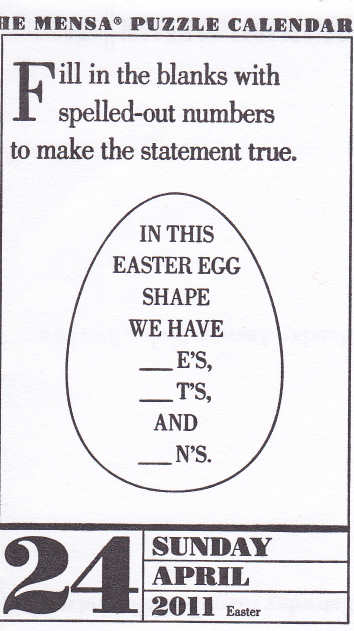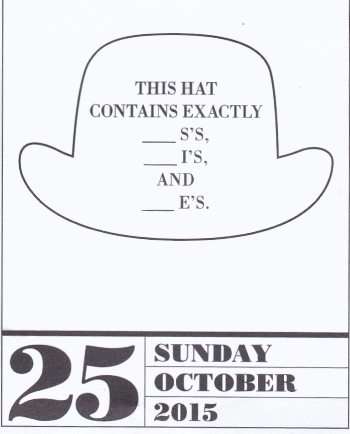
Search

As of October, 2016, Embarcadero is offering a free release
of Delphi (Delphi
10.1 Berlin Starter Edition ). There
are a few restrictions, but it is a welcome step toward making
more programmers aware of the joys of Delphi. They do say
"Offer may be withdrawn at any time", so don't delay if you want
to check it out. Please use the
feedback link to let
me know if the link stops working.

Support DFF - Shop
If you shop at Amazon anyway, consider
using this link.
We receive a few cents from each
purchase. Thanks

Support DFF - Donate
If you benefit from the website, in terms of
knowledge, entertainment value, or something otherwise useful,
consider making a donation via PayPal to help defray the
costs. (No PayPal account necessary to donate via credit
card.) Transaction is secure.

Mensa®
Daily Puzzlers
For over 15 years
Mensa Page-A-Day calendars have provided several puzzles a year
for my programming pleasure. Coding "solvers" is most fun,
but many programs also allow user solving, convenient for "fill
in the blanks" type. Below are Amazon links to the
two most recent years.
Mensa®
365 Puzzlers Calendar 2017
Mensa®
365 Puzzlers Calendar 2018

(Hint: If you can
wait, current year calendars are usually on sale in January.)

Contact
Feedback:
Send an
e-mail with your comments about this program (or anything else).

|
| |
Problem Description
Needed: a program to fill in the blanks of a "self-describing" sentence to
make it true. Sentences are of the form ".... ____ X's,
... ____ Y's, .... ____ Z's, .... and ____ vowels., " The underscore
areas must be filled with number words from "one" to "ninety-nine" (one,
five, thirteen, twenty-seven, etc.) to make the sentence true.
Background & Techniques
This is another puzzle type from my Mensa "Puzzle-A-Day" calendar. The
example included with this program is the same as theirs except
they displayed the sentence inside of a nine-sided polygon (a nonagon). I
replaced the word "nonagon" with "sentence" which reduces
the number of solution to two from the the "nonagon" version. The general structure specifies a set of letters
to count and optionally to also count the vowels. the tricky part is that
filling in the number-words for the counts, generally changes the counts!
As far as I can figure, the only way to solve this puzzle is to choose a set
of candidate number words and then check to see if they meet the sentence
conditions. For example "Here are ____ A's and ____E's." has "three"
A's and "four" E's until we fill in the word "three", then it has "six" E's.
In practice, choosing any word number can affect the correct answer for that
letter or any other letter in the set to be searched. Changing any number word
will certainly change the number of vowels in the sentence.
You can override the supplied sentence with your own text. The letters
to be searched are identified by at least two underscore characters followed by
one or more spaces, the letter to be counted and an 's,
for example ___ A's.
I have defined number words from "one" to "one hundred
ninety-nine". Above that (probably vowels) the program will gracefully
give up the search.
Non-programmers are welcome to read on, but may want to jump to bottom of
this page to download the executable program now.
Programmer's Notes:
Even though it's difficult to see how break the given problem into parts, the
problem of coding the search can be (and was) broken into sub-problems:
 | Making the "number words": I originally defined an array,
First20, of the number names from 0 ("zero) to 20 ("twenty").
In version 2, I expanded that to 99 and then to 199. by adding a Decades
array of the names "twenty" through "ninety". Those words plus a
hyphen and entries 1 through 9 from First20 and enough to generate
names "twenty-one" through "ninety-nine". Then is was easy to prefix
the names with "one hundred" to generate entries up through "one hundred
ninety-nine". These are saved in a string array
NumberWords. |
 | Identifying the letters to be counted: Even though I
specified ___ A's as the format for the
letters to be counted, I found in testing that it was good to handle
variations with no or multiple space characters between the underscore and
the letter. accepting ___'A's, etc. I
search for any 's letter pair and try to
identify a letter preceding that point. |
 | Handling vowels to be counted: Vowels represent a set of
letters rather than single letter so that checking must be handled
with special processing. |
 | Setting up the data structure: A Letters array of
TLetterrec records has an entry for each letter to be counted plus entry
0 reserved for the vowel count statistics. Each record has fields Letter
(the letter
being counted), InCount, (the count of that letter found in the original input text),
and Position (position of the underscore characters in the original text
where the proper number word will be inserted when a solution is found). A
second record type, Testrec, is passed in a TestWords array to
our checking routine and contains an entry for each letter in the Letters
array but it contains the current word being tested for that letter,
Testword, its numeric value, TestValue, which the
target value if this is to be a solution, and TestCount,
the current count for that letter including the contribution to this letter
count from the TestWord entries in all of the Testwords
records. |
 | Generating sets of potential solutions: Recursive procedure
Checknext is given letter to test. It tests for each plausible
count for that letter starting with the input count for that letter in the
original text. For each guess, it calls itself asking for the next
letter. On entry, CheckNext tests if all of the letters values
have been filled and if so, checks for a solution. |
 | Checking whether a trial solution set is a solution:
Checking for a solution is relatively simple. First we run through all
of the TestWord guesses updating TestCount values.
If vowels are being counted , we'll also run through each TestWord
and update the Testwords[0].TestCount entry with the number of
vowels found. When done, if all of the Testword records
have TestCount values equal to the corresponding TestValue
entries, we have a solution. Plugging the solution back into the
original text takes a bit more fiddling, but the hard part is over. |

April 23,2011: A fix was applied today to create Version
2.1 which fixes a problem that showed up when I tried to solve this "Easter Egg"
puzzle. I added that puzzle to the program, just for the heck of it.
June 21, 2014: Version 2.2 posted today adds a few extra
examples of self-describing sentences or
"Autograms" as Wikipedia calls them. I also added some run
statistics and the ability to interrupt long running cases. Got to run.
We're off to Kitty Hawk and the beach today to spend a few days with daughter
and family.
 October 28, 2015: This October 25th Mensa© Calendar Puzzle was solvable by the
previous version of the program, but while playing with it I decided that
counting "Consonants" as well as letters and "Vowels" would be and interesting
exercise. It was. Version 2.3 posted today does that. The
short description of the exercise is that it was a mistake earlier to put the vowel counting record
in the first record that track's location.
Adding a second out-of-order record for Consonants was too tough for me to crack
until I went to plan B. Search "Plan B" in the source code for details.
Running/Exploring the Program
Suggestions for Further Explorations
 |
Correct grammar to eliminate the 's for singular
letter counts (e.g. "contains 1 A" instead of "contains "1 A's") |
 |
Create a "Pangram", sentence with all 26 letters
counted. Not an easy task!. |
| Original: September 6, 2010 |
Modified:
May 15, 2018
|
|


